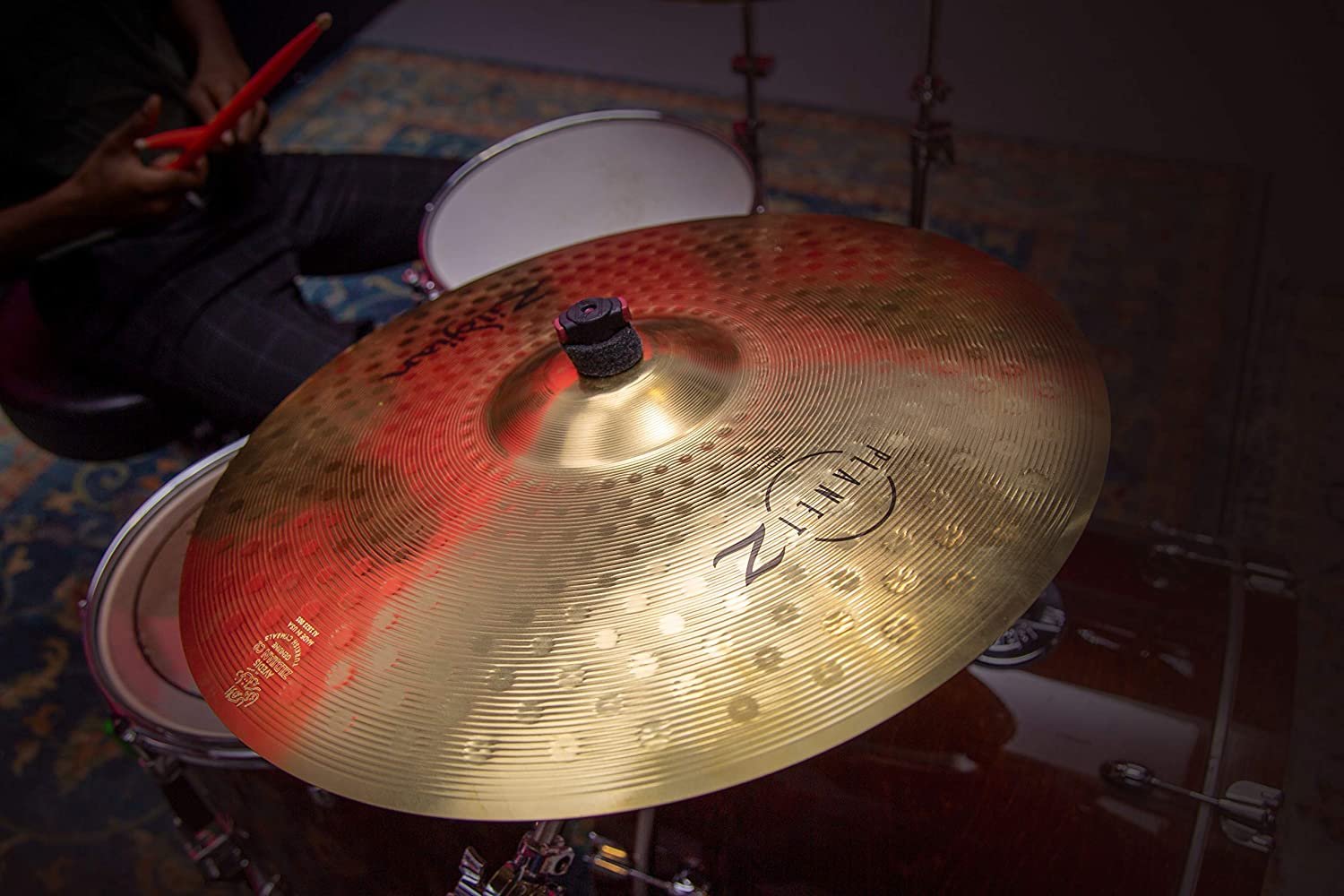Types of Cymbals – A Brief but Loud Guide
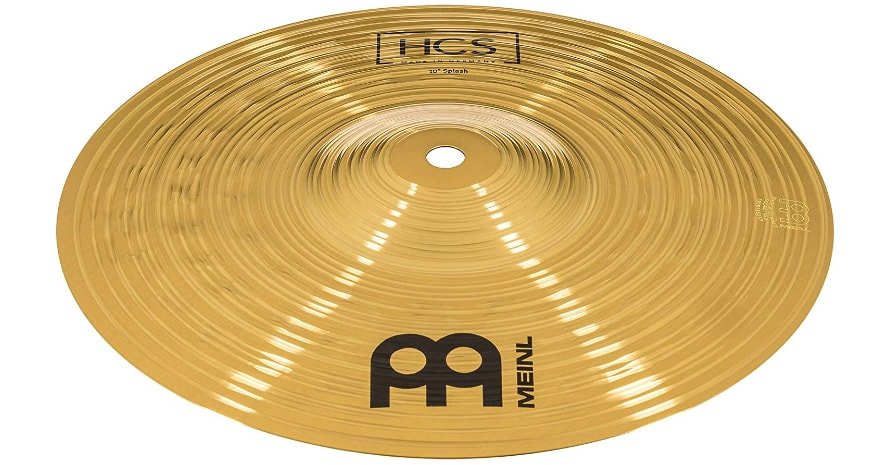
Today’s drum sets are impossible to imagine without cymbals. But if you want to learn more about drums, one of the first questions that arise at the sight of a drum kit is one about various types of cymbals. Why are there so many of them? Which one is made for that loud, accented sound? And which ones are responsible for these little hisses all along with the song? How not to get confused about them?
It’s one of the most sophisticated things about modern drum sets, as they usually contain four (or even more) cymbal stands with cymbals making different sounds and requiring peculiar handling. And that’s how to define one from another even if you are listening to the music without watching the drummer.
Guide on Different Cymbals Types
Contents
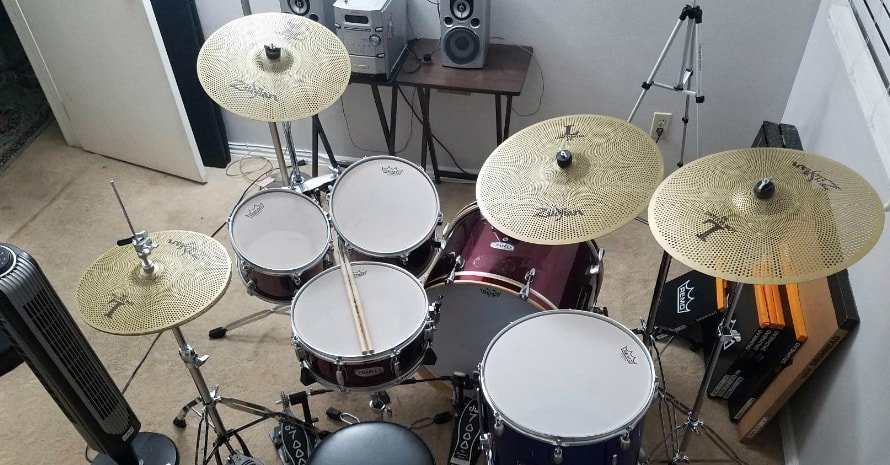
Of course, you have heard a lot of cymbal sounds. Maybe, you have even tried to distinguish them from each other by their looks or sounds. Still, there is a little guide to the art of handling cymbals and making them sound the way you want. Let’s see how they look, how they sound, and what voodoo cults, Ottoman Empire, Prohibition, and electric records contributed to their current state.
What is a cymbal?
If we speak of the musical instruments ever invented by mankind, a cymbal is among the first to mention them. You may recollect it being mentioned in the Gospel as a symbol of a loud but meaningless sound (hey, anyone expecting a cymbal to deliver a speech?) But there are even earlier accounts from the Old Testament: in Chronicles, the Ark of God is brought into the town by King David to the sounds of various musical instruments, including cymbals.
The art of making these copper plates has made significant progress since Biblical times. Today’s cymbals are generally thinner and larger. New alloys are used for them. Lots of them are now factory-made. But there are still geniuses who handcraft or modify cymbals to obtain the very sound they want.
Given today’s variety of these copper instruments, it’s time to question again: What is a cymbal? Many of today’s musicians, especially drummers, are so deep into it that they know the difference between various types of rides or hi-hats but will not give you a definition of a cymbal. They just do not operate this concept, too wide and thus impractical. Later we will share their point of view and take a closer look.
What are cymbals made of?
They have been made of metal from the very beginning. It has mostly been copper. The usage of copper still remains actual, though now there are four main alloys cymbals are made of. All of them contain copper, so calling cymbals “copper” still makes sense. Here they are:
- Bronze. Cymbal bronze is (just like the general one) an alloy of copper-tin, usually in 4:1 (though there are exceptions). Bronze techniques have been improving over the centuries. There are different types of bronze today, some of them with a signature. Bell-bronze cymbals are usually valued the most due to their nuanced and natural sound, but they are hard to make because machine techniques can’t handle the alloy properly.
- Malleable bronze. Its proportions are a bit different, containing only about 8% tin. This type of alloy requires a bit of a different technique, but the results are good. Cymbals of this alloy are great for playing loud music.
- Nickel silver (a.k.a. Neusilber). This alloy contains copper nickel and zinc. Similar to Melchior, it’s more affordable and easy to process. It’s used either for beginners’ cymbals or for highly specialized instruments where nickel silver properties are demanded.
- Brass. This alloy contains copper and zinc. Easier to process, this alloy does not allow for making really durable cymbals, so it’s mostly used to make ones for training or demonstrating. There’s a reason for that: brass is the cheapest and the easiest to process.
There are other metals used for cymbal making sporadically, but they are rather rare. There have been experiments on introducing new alloys; though most of these experiments failed, cymbals made at the time may still be around.
Cymbal types
Even a brief glance at a drum set reveals there are multiple cymbals installed around the bass drum and the toms. Let’s see why so many of them are required for a good drum pattern. A drum set does not necessarily have all of the types of drum cymbals listed – or, on the contrary, may have several cymbals of the same type, different in some slight nuances but required for certain manners or particular sequences.
There had been little difference in cymbals until the 1910s. A big Turkish cymbal sufficed for most situations. Not only was it Turkish by its name: the best cymbals were produced in the Ottoman Empire around Constantinople at that time. No wonder Western musicians were crazy about Turkish cymbals: Turks were Muslim, sharing the all-Muslim tradition of wide drum and gong usage, and, at the same time, Turks were the closest to Europe and the easiest to contact with. It was the Zildjian family who broke through to Europe in the XIX century, a company still active today.
Today’s drum kit cymbals were mostly developed in the 1920s and later. It was the time of Prohibition and thus of speakeasies that made Chicago the center of jazz supported by gangsters and illegal drinkers. This was the place where old Turkish cymbals retaining their military orchestra design were too loud for small rooms. Something quieter and more diverse was now required. So drummers mastered new techniques (like choked sounds), and cymbal makers made their instruments way lighter and larger, sounding more delicate and nuanced.
At the same time, the recording industry mastered new technologies that did not require the band to play as loudly as possible. A new cymbal sound was demanded. A simple cymbal brought from Constantinople was not enough anymore. By 1930, Constantinople got its present name Istanbul, and a jazz drum set got its current look, with a set of different types of cymbals used simultaneously.
1. Crash cymbals
A crash cymbal (or a crash drum) is meant for producing high, loud, rocky sounds that echo for some time after the hit. This cymbal sound is arguably the most recognizable. You cannot ignore it when you hear it. Crashes as a separate type were introduced by Zildjian in 1928, though similar cymbals had existed before that.
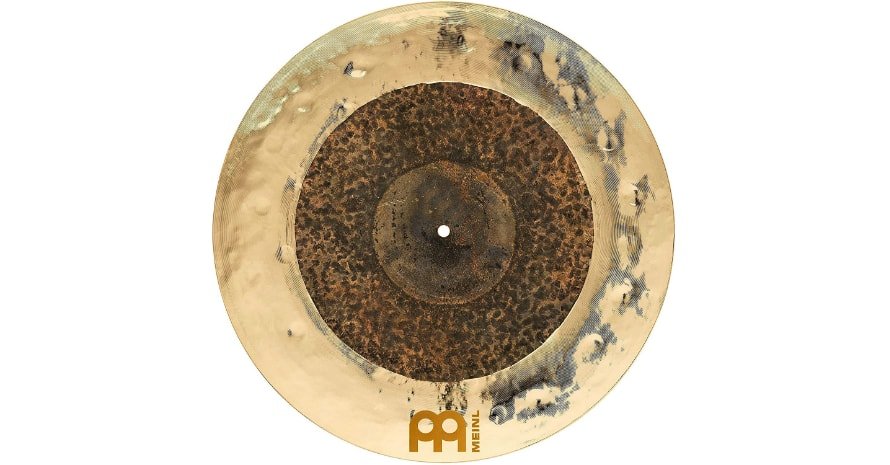
A crash cymbal is usually from 16 to 19 inches in diameter. Usually, there is only one crash in a drum kit, as it’s used rather rarely, to accent some moment. As they require the strongest hits, they are – a sad pun – the likeliest to crash.
2. Ride cymbals
What is a ride cymbal, and where did it get its name? Well, it’s that cymbal that resembles a hi-hat until a closer look. Then you see that it has only one plate and thus cannot produce open or close sounds. Not that it always makes it sound the same: it depends on the size, where you hit it, and how strong, with its sounds that vary between bells and crashes.

They are different from crash cymbals as well. Crashes are meant to emphasize a moment, to highlight an accent with their loud and clear sounds. Rides are meant for literally riding with the music – that is, playing repetitive patterns throughout the song, with their sound sustaining after the hit. The usage of a ride cymbal has been researched quite closely.
The margin between crash and ride cymbals, though, is quite vague, being a recent innovation in drumming. About a century ago, there was no class division between them, but a slow progression that impacted the size and the weight of a cymbal. Now rides are slightly larger than crashes, being from 18 to 22 inches in diameter, though the most popular is 20”.
3. Hi-hats
These are the most distinct of all the cymbals around. Hi-hats are paired cymbals that form a flying saucer of the drum kit. The sound they make is usually the tiniest and the highest of all the cymbals. They usually accompany other instruments almost throughout the song, just like rides.
The particular sound they make depends on the way you hit it – and as well on their position to each other when being hit. There is a special pedal meant for opening or closing hats. That’s why open and closed hi-hat sounds are differentiated. These sounds are now ubiquitous in rock, jazz, or pop music, and wherever you listen up.
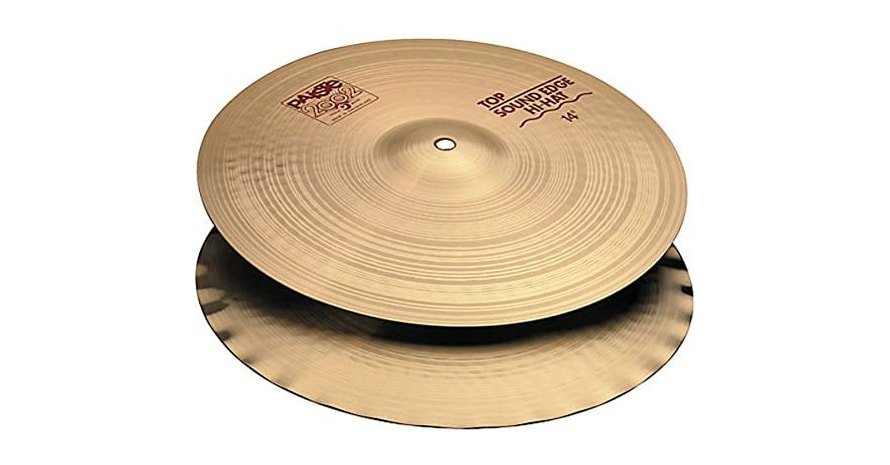
Hi-hats are quite a recent invention (next to classical cymbals), but they have already become a must for a drum set. They are usually positioned to the left of the drummer’s throne, so it’s easier to control the pedal with the left foot, the right one controlling the bass drum pedal. But the stick the drummer uses to hit the hi-hat is usually in the right hand, so it looks a bit controversial. That’s what art is about.
4. Splash cymbals
These are the smallest action cymbals, being from 4” to 14’, most commonly 10” in diameter. They are made to produce the finest sounds similar to crash ones; in fact, the difference between a splash and a crash is mostly about the size.

This is a very specific and not necessary type of cymbal for a standard drum set. But if you decide you want it for your drumming style and your kind of music, it’s no problem to get one. And when you get your splash, you can install it wherever you feel necessary in your set. There are both standalone stands (pun unintended) and booms to connect it to snares or toms. You can even attach it as an upper cymbal on another cymbal stand; being smaller than the rest, it will leave the sides of the lower cymbal exposed.
There are various sorts of splash cymbals, depending on what music you intend to perform. Along with traditional ones, there are rock splashes, salsa splashes, china splashes, and other types. Which one to select? It depends on your style of music.
5. China cymbals
A China cymbal is (despite its name) made of the same sorts of alloy and sounding not gently and tenderly but crisply and rashly. Sometimes it’s also called “trash cymbal”, a pun on both crash type and the subgenre of rock they fit in well. But the original name, highlighting its similarity with old-time Chinese cymbals, remains.
These cymbals deliver a highly recognizable sound, way more aggressive than a ride or a hi-hat, compared rather to a crash. The sounds might differ, as they depend on materials, size, and shape. There are examples of playing multiple China cymbals, so they even form a melody by the notes they deliver! To make it even more distinctive, China cymbals are often installed upside down.
If you are not too eager for those experiments, one China will be enough for your drum set. Still, you must choose the right one, as it will affect (with its sporadic sounds) the entire soundscape.
Crash vs ride cymbal
As these two types look similar, there is always a temptation to use one cymbal in different manners, so it may sound like a ride and like a crash, depending on how hard you hit. In general, there is a bit of truth in it. But some differences can’t go unnoticed.
Being generally larger and heavier than a crash, a ride requires a stronger hit to sound crashy. The resulting sound will be a bit darker, lower in tone, and heavier to perceive. So you may try it if you don’t mind the limitations caused by using one cymbal instead of two.
By the way, playing the crash in a ride manner is usually… hmmm… even crappier. So you better have both. But if you cannot afford it (for whatever reason, from money to organizing your drum set), then you better get a real ride and sometimes use it as a crash than vice versa.
How to start choosing?
So, when you have made up your mind on what types of cymbals you want in your drum set, you may start choosing particular ones. The best way to do it is by having multiple options at the same time, so you can compare them directly.
So let’s suppose you’re in a store where you have all the cymbals available and a drum set ready for checking them.
- Get all the cymbals of a certain type you are selecting from.
- Prepare a drum set you intend to play (or one as similar to it as possible).
- Install all the cymbals.
- Play a familiar sequence with the bass drum, the snare, and each of the cymbals, consequently.
- Choose the one that sounds the best to you.
- Repeat for all the cymbal types you need.
- Install all the chosen cymbals and play again to make sure they sound well together.
It’s better to check four or five cymbals of a certain type at the same time. It’s not too many to get confused about, yet not too few to choose from.
Yes, you can order one online after you have tried it. YouTube is good for pre-choosing, and for selecting which ones you want to try. But no YouTube review will replace that feeling when you hit it with a stick, hear it live, and apply your own manner to it.
Cymbal construction
A cymbal looks like a metal plate with a bell in the center. The area closer to the bell is called a ride area; the outside is called the “crash area”. This shape is typical for most of today’s cymbals. This simple construction may vary in many ways, though.
What affects the sound of a cymbal?
Here is the list of factors that affect the sound:
- Size. Yes, it matters, and we mean the diameter. A larger cymbal sounds louder, and the sound sustains longer.
- Weight. Lightweight models respond faster and produce a brighter, thinner sound, while heavier ones sound low and deep.
- Shape. The stronger the plate bent (it’s called “profile”), the higher the pitch.
These are the main factors you can consider, though there are others (like the alloy it’s made of and the sticks you hit it with).
FAQ on Cymbals
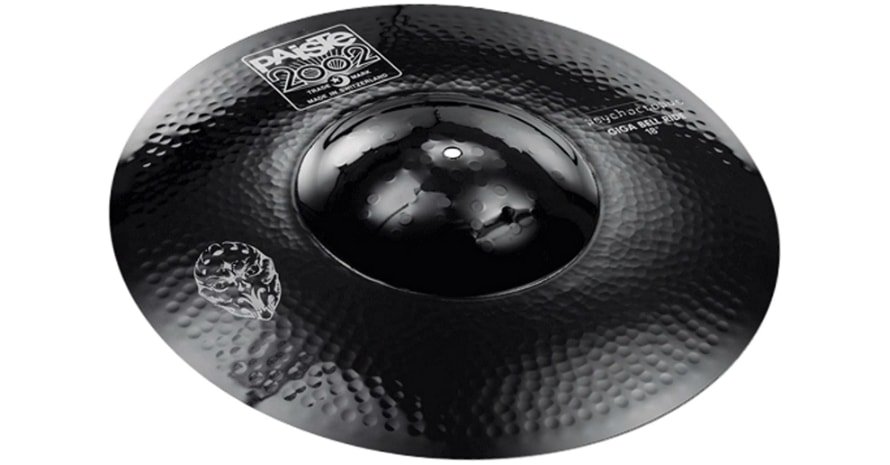
Even if you are aware of various cymbal types (in theory), there are hundreds of little things to know and feel to make the right choices. Here are those I heard from beginners the most frequently.
How do I choose a cymbal?
First of all, you decide which music you want to play and how you want it to sound. There’s nothing bad about having a reference (if you have no plagiarism intentions). So first, you select which types of cymbals you want in your drum set (along with regular hi-hats/crashes/rides, or instead of some). Then you select particular plates for any of these. You can purchase a premade set, but if you are concerned about selecting separate cymbals, that’s not the way, is it?
When checking the cymbal, you need to test the way it sounds with the sticks you intend to use (or, at least, with similar ones). Hit its various zones to check all the sounds the cymbal is capable of. Test it with the stand it will be placed on.
Last but not least, you should try the cymbal with the rest of your drum set (if possible). Only this will let you hear the exact feel of what it sounds like in the set. In the perfect world, I’d recommend you use it at a gig or at a rehearsal with your entire band to get the most realistic experience; but I know it is a very special situation if a band makes a session just to check the drummer’s new cymbal.
What cymbals are best for rock?
You will definitely need a hi-hat, a ride, a crash, and a China. If you play some specific sort of rock (jazz fusion or ethnic-infused), you may also feel the need for splashes. If you are choosing between crash vs. ride cymbals, chances are you need both (I have already told you why).
When it comes to brands, there are some win-win options, like Zildjian, Sabian/Crescent, Paiste, Meinl, and Hammerax. There are brands popular rather than among soul and funk drummers (like Soultone), but rock musicians, like Steven Adler of Guns N’Roses, may also consider them worthy. If you’re budget-concerned, there are Wuhan and other Asian brands that offer cheaper but decent cymbals.
Of course, you can go with premade sets by respectable brands like Ludwig or Pearl. But they do not specialize in cymbals, making entire sets. So there is a reason to dig a bit deeper.
What size ride cymbal should I get?
As I have said, the most typical ride is 20 inches in diameter. But again, you decide on which one you need.
What is the best brand of cymbals?
There are several respectable brands from America, Europe, and Japan. The aforementioned Zildjian is now based in the US; though originally it was from the Ottoman Empire. To escape the Armenian genocide, the Zildjian family moved to America and maintained its business there. By the way, a well-known Sabian brand was also established by one of the Zildjians.
There is a similar story behind the Paiste brand. Michail Toomas Paiste, an Estonian musician, and entrepreneur started instrument manufacturing in the Russian Empire. After the Russian Revolution, he had to move back to Estonia, and when it was occupied by the Soviets, to Poland. Finally, the Paistes settled in Switzerland and then in Sweden, bringing their traditions around Europe as the Zildjians did to America.
Among other brands worth a try, I’d mention MEINL (a family-owned brand from Germany), Istanbul Agop and Istanbul Mehmet (both still based in Turkey), and an inevitable Chinese presence named Wuhan Cymbals (no, theirs are not crown-shaped).
It may seem too obvious, but your drum set cymbals do not have to be by the same vendor. You can have a hi-hat by Zildjian, a crash by Paiste, and so on. If you are not satisfied with any cymbal on the market, you can contact minor vendors to get a customized one. But this will require the clearest understanding of what you want.
Out with a Bang!
Cymbals are an entire branch of art, being what color your music bright. No wonder they deserve all the attention they have. Not obvious to an inexperienced listener, these nuances used by a good drummer can transform the overall sound of the band. So cymbals matter, and having them the right way does too.
A customized drum set may be a dream of any drummer; for some, though, it’s a reality. The experience they may share can be absorbed by you if you want. There are many interviews and demonstrations where these masters share their vision. It makes sense to watch some of them until something resonates in you.
If you have found this article useful, you can bookmark it by sharing it on your Facebook, Twitter, or whatever. You can also leave comments if you want to share your experience. Hope we’ll have a rocking session in the comments!



